By Andy Oppenheimer
On 26 May 2025 at around 18.00 hrs local time, a car was driven into dozens of people in the centre of Liverpool during the city’s massive football victory parade. Some 79 pedestrians were injured with 50 hospitalised.
The vehicle first struck a man, throwing him into the air, then ploughed on through the crowd before coming to a stop. Several of the injured had to be pulled out from under the car.
At first glance of the multiple videos of the incident, and despite the driver being charged days later with seven non-terrorist offences, the horrific scene resembled recent ramming attacks that have occurred in Magdeburg, Germany (20 December 2024) New Orleans, USA (1 January 2025), and Vancouver, Canada (26 April 2025), among others.
This incident also illustrated the difficulties faced by law enforcement and counter-terror police and authorities in assessing ramming incidents after they have occurred – in particular, the driver’s motivation – and pre-empting them in advance.
This article focuses primarily on this relatively new form of terrorism and the challenges it poses worldwide. Cheap, easy and deadly.
After decades of terrorist groups deploying advanced weaponry such as IEDs – most notably, numerous massive vehicle bombs by the Provisional IRA and al-Qaeda – ramming incidents (sometimes accompanied by stabbings and shootings) have increased mainly because a car is a ubiquitous, legal, and a potentially lethal weapon. This method of terror is also far easier to carry out than using sophisticated bomb-making skills and equipment, the acquisition of which can be tracked by counter-terror authorities and police. As highlighted in a 2021 RAND Europe report for the European Commission, : “This tactic requires little or no training, no specific skillset, and carries a relatively low risk of early detection.”
Some 70% of vehicle-ramming incidents have occurred from 2014 to 2019. They were the most lethal form of attack in 2016, having caused more than 50% of all terrorism-related fatalities in that year – with the most infamous being the attack in Nice, France, on 14 July – when a man drove a rented truck through a seaside promenade, killing 86.
A brief history of rammings
In the first six months of 2025, there have been 15 such attacks worldwide, not counting the Liverpool incident, killing 71.
The use of vehicles as weapons by terrorists first emerged in the 2000s, when Palestinian attackers targeted Israelis. By 2010, both al-Qaeda and ISIS were openly encouraging their followers to carry out ramming attacks against civilians.
Although these attacks usually do not produce as many fatalities as suicide and other bombings, they cause mayhem, injury and long-term effects on victims and on the many bystanders and emergency health workers who witness these incidents.
Events involving large pedestrian crowds, such as Christmas markets and festivals, are most vulnerable – and attacks tend to come in clusters. A large vehicle being driven at anything faster than 10 mph can inflict severe damage on pedestrians, who have no time to escape or place to hide.
The New Orleans attack also involved IEDs, including one found in the vehicle and pipe bombs planted in street coolers, which were set for detonation and connected to a wireless remote found in the truck. They were rendered safe immediately following the incident.
Right-wing extremists have been implicated in several attacks, most notably during a White nationalist rally in Charlottesville, Virgina on 12 August 2017, when a White supremacist drove his car into a crowd of counter-protestors, killing one person and injuring 35. On 23 April 2018 in Toronto, Canada a 25-year old self-styled “incel” (involuntary celibate) drove a rental van into a crowd of mainly women, killing 10 people and injuring 16.
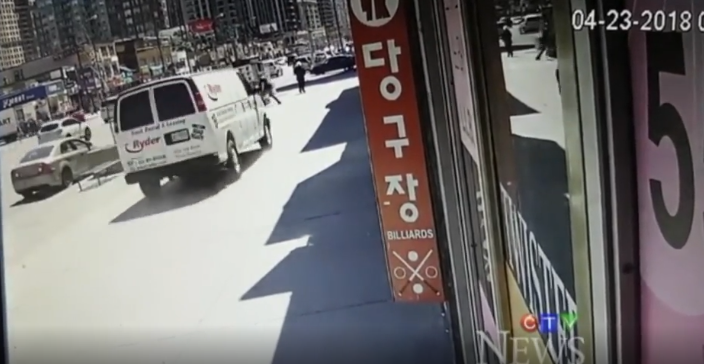
Wikimedia Commons
Not ideologically motivated
The diversity in perpetrator backgrounds and motivations presents a considerable challenge to counter-terrorism. Most attacks are by lone actors, who are difficult to pre-empt. Complicating this method of attack is sometimes not terrorist-related, but associated with ‘mental health issues.’
On 11 November 2024 in Zhuhai, southern China, a 62-year-old man drove a car into a sports centre, killing 35. He was believed to have been motivated by anger over a recent divorce settlement. He was sentenced to death in December 2024 and executed on 20 January 2025.
Equally disturbing is the conclusion made by a study, Smashing into Crowds – An Analysis of Vehicle Ramming Attacks conducted some six years earlier by San Jose State University – that perpetrators are often not motivated by any specific ideology, but by “something that has a lure and force all of its own.”
The San Jose study also described the apparent “imitative” quality of vehicle rammings (the potential for copycat offences). The study, however, also pointed out that devastating impact of the Bastille Day ramming in Nice in 2016 may have served as an incentive for ISIS to advocate and promote similar tactics. According to a Press Release from the U.S. Department of Justice, the Nice attack was in fact a driving reason behind the publication of Rumiyah Issue 3 — the ISIS magazine edition that explicitly promoted vehicle-ramming tactics.
As social media spreads and amplifies anger motivation and actively or incidentally radicalises or encourages acts of violence, stopping the endless and relentless flow of hate material online is a huge challenge for all authorities.
Spotting potential rammers
The 2021 Rand study examined the role of renting and sharing vehicles – later highlighted after the New Orleans attack. It found there was insufficient collaboration between the auto rental trade and law enforcement partly because of data protection legislation, lack of training, and ability to identify potential felons renting vehicles, including from online bookings. The report recommended more vigorous background checks and requirement for financial deposits.
In the US, the The Department of Homeland Security’s Cybersecurity and Infrastructure Security Agency (CISA) has recommended increased awareness and the reporting of suspect activities to law enforcement, especially regarding renting vehicles:
· Reported theft of large or heavy-duty vehicles.
· Customer’s difficulty explaining their planned use of a rented vehicle.
· Nervousness or other suspicious behaviour
· Insistence on paying in cash.
· Lack of or refusal to produce required documentation for a vehicle rental.
· Difficulty operating, or apparent lack of familiarity or experience with, a rented vehicle.
· Loitering, parking, or standing in the same area over multiple days with no clear explanation.
· Unexplained use of binoculars, cameras, or recording devices around a certain area.
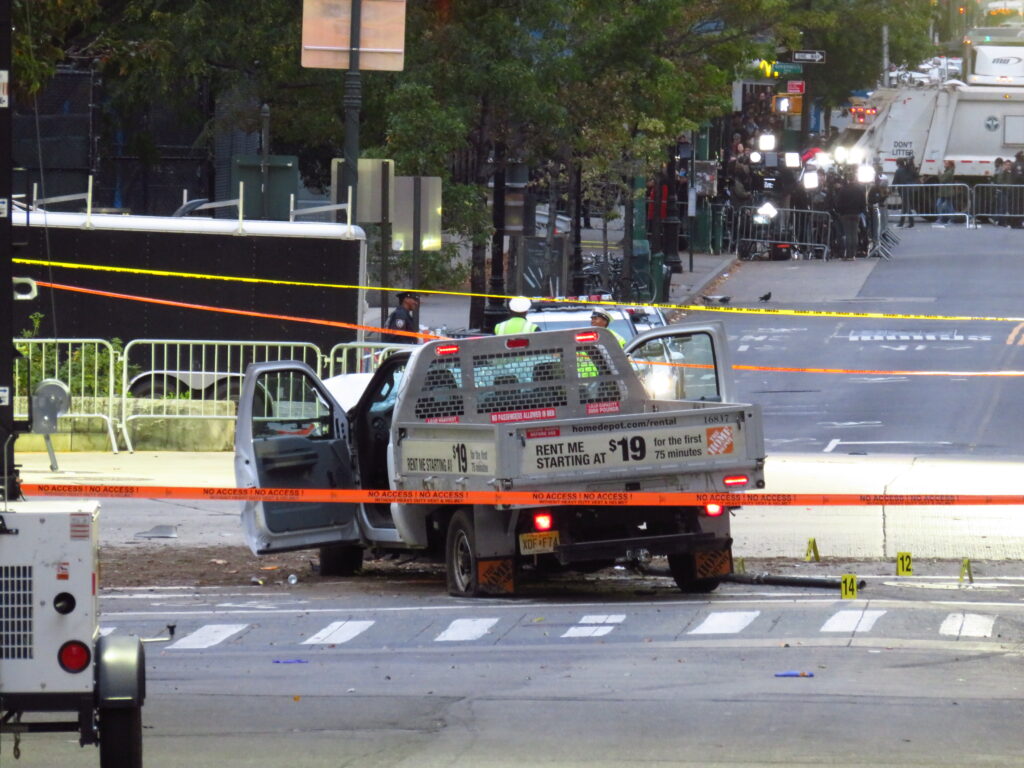
Public event countermeasures
Measures taken by event organisers can prevent vehicle intrusion and attack where big crowds are expected. These include clear signage for emergency entry and exit points; clear definition of the event perimeter showing where vehicles are not allowed access (road blocks, etc); measures to restrict vehicles from pedestrianised areas; physical barriers such as bollards, heavy planters and barricades to create stand-off distances between large crowds and vehicles; and positioning heavy vehicles round the perimeter of crowds to provide an extra barrier.
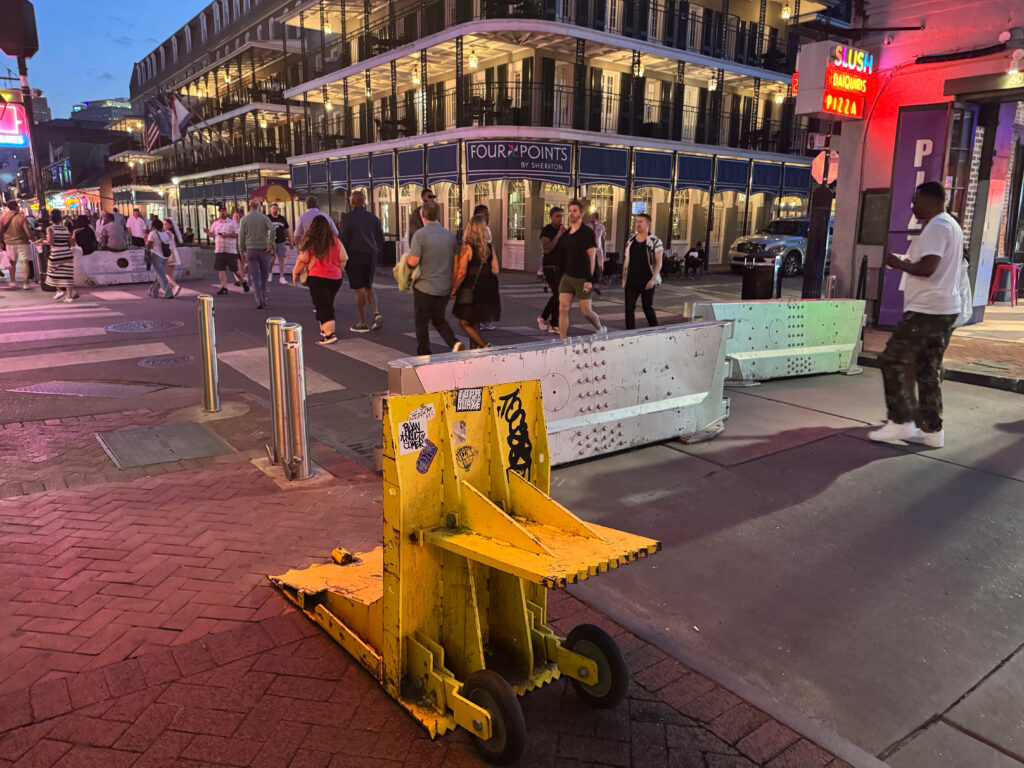
Digital measures to prevent cars from driving into pedestrianised areas also include geofencing, which creates virtual boundaries based on a vehicle’s location data.
However, critics of these urban design countermeasures have argued that while they enhance security, they can also be perceived as a form of subtle oppression, or even as a symbolic victory for terrorism – since they reshape public spaces as a response to fear.
Installing vehicle barriers
Hostile Vehicle Mitigation (HVM) includes both physical barriers and other preventive measures to improve street security.
Bollards and other street barriers have been in existence in London following the Westminster (22 March 2017) and London Bridge (3 June 2017) terrorist ramming attacks. Some barriers only appear or pop up when the boundary is breached by a vehicle.
In the first 2017 incident, a hired vehicle was driven across Westminster Bridge, then mounted the pavement twice, colliding with pedestrians. It then crashed into the east perimeter gates of the Palace of Westminster. The driver, Khalid Masood exited the car, ran into the vehicle entrance and fatally stabbed a police constable, Keith Palmer.
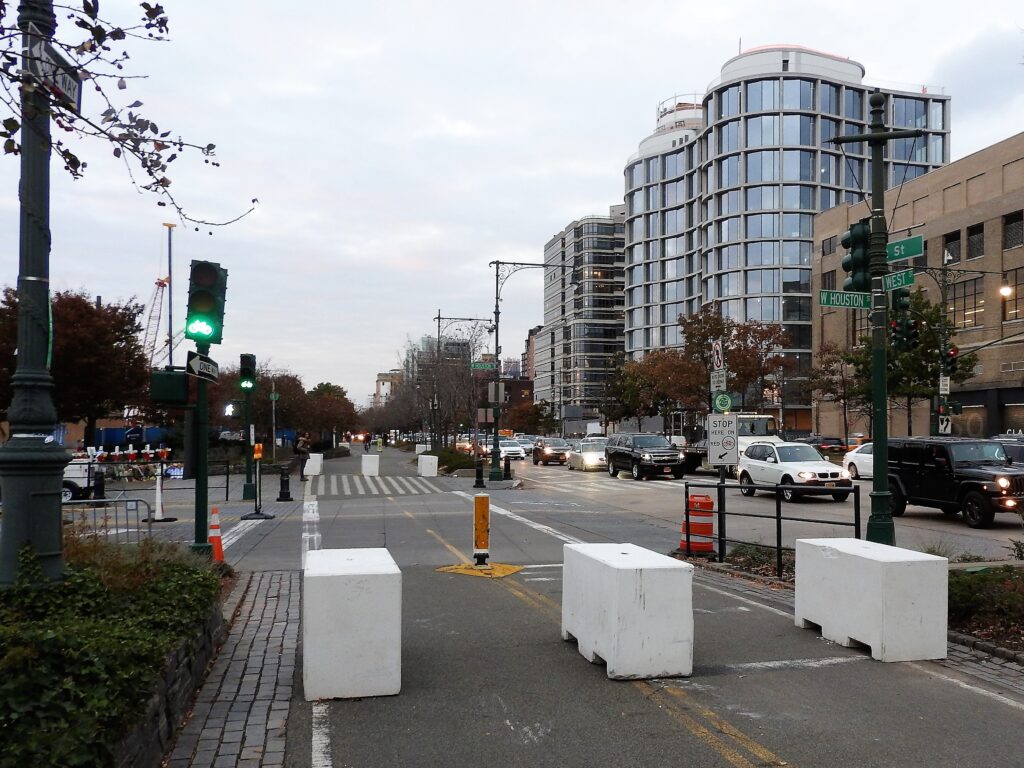
Jim.henderson/Wikimedia
In the second, just after 10 pm three attackers drove a hired van south over London Bridge, mounting the east footway repeatedly. The van struck and injured five pedestrians, two of whom died at the scene.
In New York City bollards were erected along the Hudson River Park cycle path after an ISIS-inspired man drove a rented pick-up truck into cyclists and runners along the path, killing eight and injuring 13, on 31 October 2017. The incident was considered the deadliest terrorist attack in New York since 9/11.
Do they work?
On New Year’s Day in New Orleans, steel barricades installed to prevent vehicular access were not in use before the attack – although police were aware they sometimes malfunctioned. The perpetrator would likely have known this while he planned his attack. A police vehicle was parked to block access to Bourbon Street, but he skirted round it and drove onto the sidewalk.
Vehicle barriers are already set up during many large-scale outdoor events such as festivals or parades, including during the Liverpool parade in May. However, according to Merseyside Police, a barrier had been removed from a previously blocked street on very short notice to allow an ambulance through to deal with a medical emergency, and the vehicle involved in the incident allegedly followed it into the crowded street without being stopped.
Some also question the effectiveness of such barriers. After the New Orleans tragedy, University of Michigan professor and counterterrorism expert Javed Ali said: “He had a Ford 150 pick-up truck. You gun that thing at 50, 60 miles an hour, and who knows, even with bollards in place, would the car just – through physics – have rammed through them anyways?”
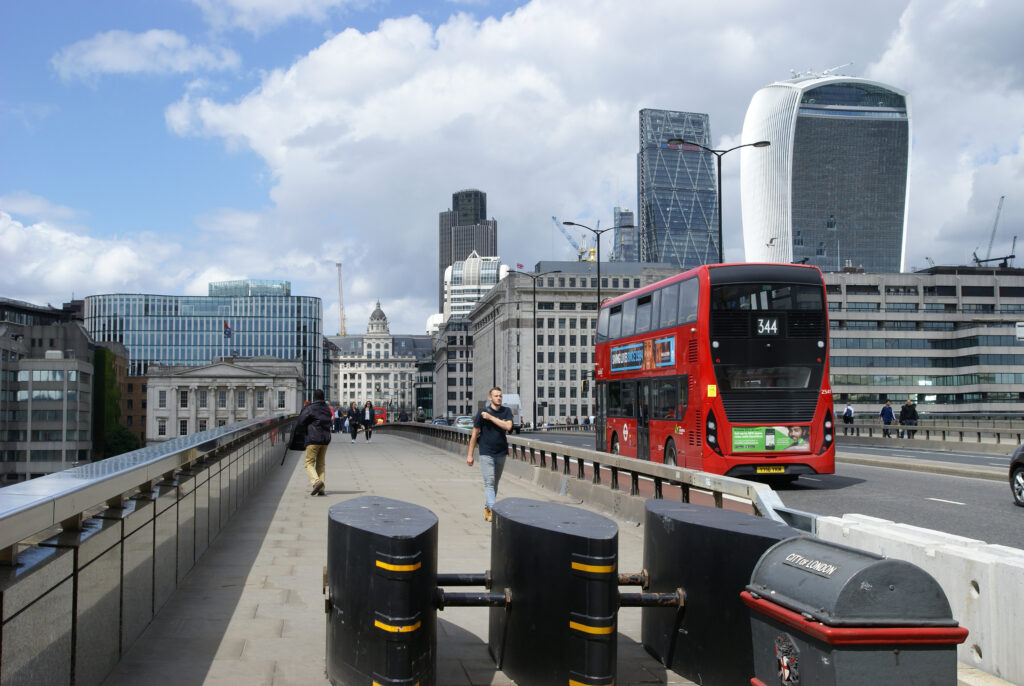
Andy Oppenheimer AIExpE MIABTI is an independent CBRNE and counter-terrorism analyst, former editor of CBNW Journal and Jane’s NBC Defence, and author of IRA: The Bombs and the Bullets – A History of Deadly Ingenuity (2008).





